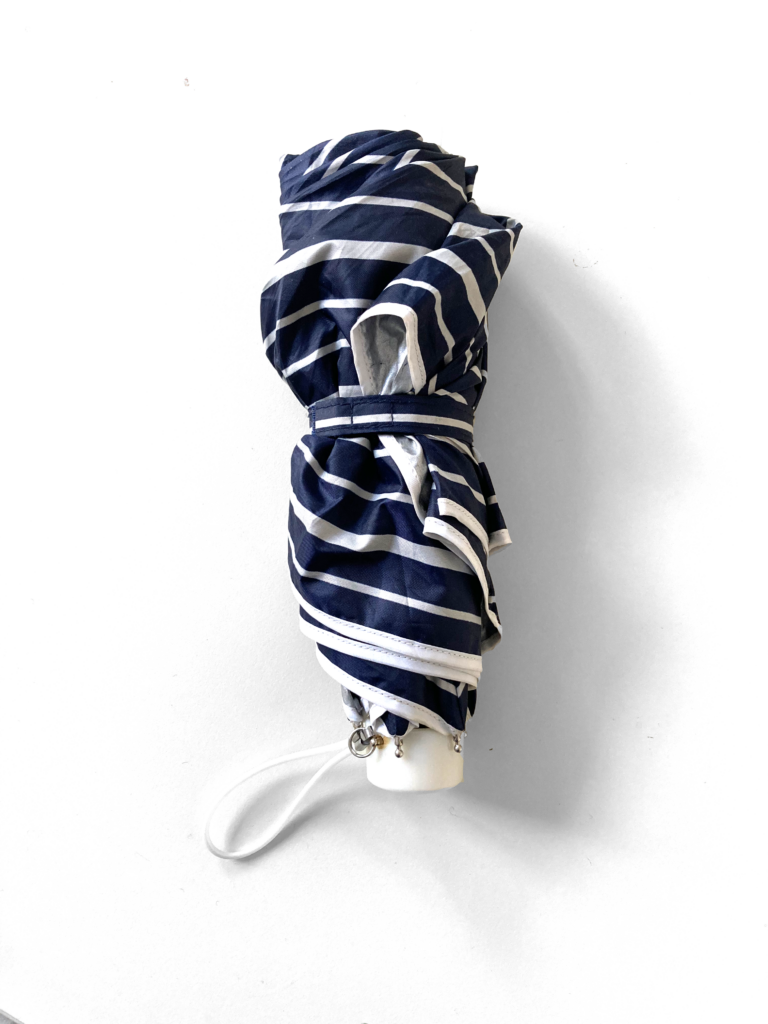
Umbrella, from the Latin umbraculum, literally means small shade. Although umbrellas are most commonly associated with rain nowadays, they carry the original purpose of shading in the name. Today’s higasa (日傘), Japanese parasols, differ from rain umbrellas regarding materials. Although sometimes used interchangeably with rain ones, currently manufactured parasols are specialized in blocking heat and ultraviolet (UV) rays. UV umbrellas include a special coating on the fabric surface made of titanium dioxide, zinc dioxide, or other similar compounds, sometimes black to absorb ultraviolet rays, and sometimes silver designed to reflect UV radiation instead of absorbing it.
Shades in the context of climate change can be fruitfully explored as “lived regions”, ephemeral but delimited spaces. Although shade appears bidimensional when cast on a flat surface, umbrella shade must be understood as a volumetric region as it creates a tridimensional region of cooler microclimate. A common UV-cut parasol allows for a small portable portion of altered climate: a specific fabric mesh protects the body from ultraviolet rays (responsible for skin damage), and a reflecting or absorbing fabric decreases the temperature, blocking sun radiations’ warming energy. The umbrella poses as a mediator between the sun and the body and is part of a material culture of climatic adaptation. However, the umbrella could also be seen as a spacing device that creates minimal units of inhabitable urban space. If we focus on the space under the umbrella, we can see that it has been critical. Rulers, or gods and spirits in Japanese religiosities, can appear under umbrellas. Not only do gods and rulers exist under the umbrella’s protection, but during rituals or matsuri (shrine festivals), this protected space becomes traversable by lay people. At the Yasurai Festival at Imamiya shrine, worshippers enter under the umbrella to eliminate diseases. Always linked to some form of protection, in some contexts, the space under the umbrella becomes a territory different from the surroundings because of its sacrality; in the current climatic crisis, this shaded portion of space creates a region of microclimatic specificity, differentiating it from a hazardous environment. In other words, the space created by the umbrella, although temporary, elusive, and without clear borders, has been an important and under-theorized urban space.
Extract from: https://tarde.info/umbrellas-and-other-umbracula/